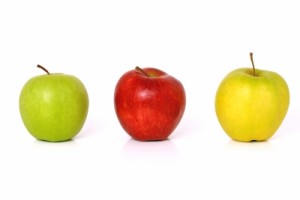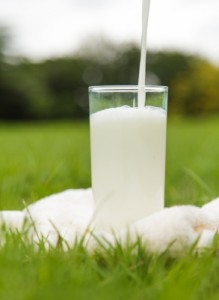 I’ve had the issue of detoxification on my list of articles to write for some time because it’s such an important part of a healthy lifestyle. The foods we eat, the chemicals we put on our face and skin, inhale in our homes and outside, and ingest through our cooking have been shown to cause cancer, lead to sex changes in animals, and overwhelm our immune systems.
I’ve had the issue of detoxification on my list of articles to write for some time because it’s such an important part of a healthy lifestyle. The foods we eat, the chemicals we put on our face and skin, inhale in our homes and outside, and ingest through our cooking have been shown to cause cancer, lead to sex changes in animals, and overwhelm our immune systems.
We all need to find some simple ways to minimize our exposure and to help our bodies rid themselves of what we’ve already been exposed to (even babies are born with a toxic load already from their mother’s exposure: more on that in a moment.)
I was finally spurred into action by the recent petition France made to the European environmental ministers demanding that they develop an official strategy around endocrine disruptors.
Endocrine disruptors are “products and everyday objects, such as detergents, plastics, cosmetics, textiles, paints, contain substances with endocrine disrupting properties… that interfere with the hormonal regulation of living beings and affect reproduction, growth, development, behavior, etc.”
France argued that “the effects of some chemicals on the human body are now sufficiently documented” saying an official stance is needed to protect its citizens from their harms, “especially among sensitive populations – pregnant women and young children.” What we as adults can handle is one thing, but infants can bear much less.
Sweden and Denmark immediately backed France in demanding regulation of these “stealth chemicals.” Sweden took it one step further, filing a lawsuit with the European Court of Justice. Sweden’s environmental minister said, “We have decided to sue the Commission because we want the court to force the Commission to deliver the scientific criteria so we can start moving toward a poison-free society.”
Wow! The idea that the toxic chemicals that disrupt our systems are being regulated or that these European countries are calling for that regulation is amazing and exciting. That’s not going to happen soon in U.S. unfortunately. But hopefully, if the regulation goes through, Americans will begin to demand that the government regulate the toxic chemicals that are disrupting our systems and share the health risks openly with citizens so they can make informed decisions too.
Endocrine disruptors pose challenges to us because they are basically “fake” hormones that sit in the hormone receptor sites and block our hormones from entering. Each hormone has a job or jobs to do, such as starting or stopping a process of some kind. When the fake hormone takes its place, the processes that should occur do not and are “disrupted,” causing a host of health concerns in the body at the same time that the true hormone travels through our blood looking for a place to land, leading to high insulin or estrogen levels for example.
Many people think that they aren’t exposed to that many toxins or that the exposure levels are not really a problem. But a study almost ten years ago by the Environmental Working Group (EWG) studied the umbilical cord blood of babies and found that they had an average of 200 contaminants in their blood upon birth.
The EWG tested over 400 chemicals from industrial and consumer products including pesticides, heavy metals, flame retardants used in furniture, blankets and clothing, one of the chemicals that makes Teflon non-stick cookware, and more.
In total, they found 287 chemicals in the babies’ blood including 209 chemicals that had never before showed up in cord blood. Since it’s estimated that 2000 new chemicals are introduced every year, who knows what the study would reveal ten years later. (I definitely hope they do a follow up soon!)
A more recent study in 2011 tested pregnant women and their babies for the presence of genetically modified food chemicals and found that 93% of pregnant women had these chemicals in their blood and 80% of the umbilical cord samples from babies contained the GMO chemicals at birth.
And before you think, well, I eat organic and live healthy so that doesn’t affect me, a Canadian study in 2006 tested people from all areas of the country and found chemicals present in all of their blood. One of the participants was an Indian chief in a remote rural tribe in Northwestern Quebec and he too tested positive for chemicals, even though he lives far removed from urban pollution and processed foods. You can read the whole fascinating report at http://environmentaldefence.ca/reports/toxic-nation-report-pollution-canadians
We can’t escape these chemicals: even chemicals banned more than 20 years ago are still showing up in our blood. They travel through the air via weather patterns, through our water supplies, leach into the ground and impact our food supply, are used on so many of the products around us including clothing, furniture, and in plastics, cosmetics, and foods.
While we can’t avoid them, we can, however, minimize our exposure by choosing organic foods and using organic health care and house hold products, filtering our water (especially if you have fluoridated water, as the medical journal the Lancet declared fluoride to be a neurotoxin this week), avoiding plastics and never allowing hot food or water to come in contact with plastic, and cooking with glass or ceramic and avoiding non-stick coatings.
In addition, since many of these chemicals stay in our fat cells, that means they stay in the fat cells of the animals we eat. Hormone-free, antibiotic-free, pesticide-free meat that is grass-fed or in the case of chickens, pasture-raised and not vegetarian fed, wild deep sea fish that are not farm-raised, or wild meats such as bison or venison are best.
Look for the list of fruits and vegetables that you must buy organic that I wrote about earlier this Spring and avoid packaged and processed foods as much as you can. Nitrates in meats are another harmful toxin so avoid packaged and processed meats and choose less fatty fish. The Environmental Working Group publishes lists of fruits and vegetables as well as guidelines for healthy fish and even guidelines for cosmetics and you can find them at www.ewg.org
The body is meant to detoxify small amounts of toxins on a daily basis, usually while we sleep. That makes getting a really good night’s rest important to allow your body to perform this vital task. But the amount of chemicals that we are exposed to these days is greater than our bodies should have to bear. If we’re healthy, the body will get by, but as we are exposed to more and more, if our immune system is compromised in any way, the body will struggle and a myriad of health conditions can occur including cancer.
In addition to eating well and drinking lots of water to help our bodies flush out toxic substances, one of the most important things you can do to support your body in detoxification is sweat. Exercise to the point of sweating, take a sauna or a steam bath regularly and try to minimize use of antiperspirants. Antiperspirant is a very recent invention, one that is blocking a very important body function.
If you sweat a lot, try just using a deodorant, preferably one without aluminum. Aluminum is a toxin and when you put it on your armpits, your body will absorb it rapidly. And while aluminum is a big AVOID, there are many other chemicals in antiperspirants and deodorants such as propylene glycol, parabens, fragrances dyes and more: daily exposure can do long-term harm. You can learn more in my article on Why Your Cosmetics and Toiletries Matter As Much (or More) Than Your Food.
There are natural antiperspirants as well and if you must use one, definitely find an organic version. But if you can save the antiperspirant for the occasional big presentation days and use a deodorant most days instead, your body will still be able to release the toxins as intended.
If giving up your favorite food or skin product leaves you quaking, just make as many good choices as you can in other areas. If you need to hold onto a few near and dear products, it’s ok. Your body can deal with small amounts: it’s the cumulative effect or exposure to so many different chemicals on a daily basis that is of concern. But go green and organic in as many other products and areas as you can. And be sure to work up a sweat. Your body will thank you!
To your wellness and health: your true wealth!
Inger
Author: Inger Pols is the Editor of the New England Health Advisory and Author/Creator, Finally Make It Happen, the proven process to get what you want. Get a free special report on The Truth About Sugar: It’s Not All Equal at www.IngerPols.com
Photo Source: courtesy of Praisaeng / Free Digital Photos


 Recently, a study claimed that taking vitamins has no merit. It’s not new news: pharmaceutical-funded studies have been claiming this for some time (because vitamins can’t be patented and if you take them, you might not need their drugs.) While the study says vitamins in isolation don’t work (I agree), it also claims that multivitamins have no merit (I disagree: synthetic multivitamins have no merit, but whole food multi-vitamins have been shown to have health benefits.)
Recently, a study claimed that taking vitamins has no merit. It’s not new news: pharmaceutical-funded studies have been claiming this for some time (because vitamins can’t be patented and if you take them, you might not need their drugs.) While the study says vitamins in isolation don’t work (I agree), it also claims that multivitamins have no merit (I disagree: synthetic multivitamins have no merit, but whole food multi-vitamins have been shown to have health benefits.)

 We are a sleep-deprived nation. A recent study revealed that 70 million Americans do not get adequate sleep. Experts say we need seven to nine hours a night consistently, but many of us get about five to seven. Furthermore, while our bodies were made to recover from one interrupted night’s sleep, studies now show that less than optimal sleep for a few nights in a row can change your sleep pattern, weaken your immune system and lead to an increased likelihood of weight gain, Type 2 diabetes, heart conditions, loss of long-term memory and more. Even one off night can increase your blood sugar levels and impair your sensitivity to insulin.
We are a sleep-deprived nation. A recent study revealed that 70 million Americans do not get adequate sleep. Experts say we need seven to nine hours a night consistently, but many of us get about five to seven. Furthermore, while our bodies were made to recover from one interrupted night’s sleep, studies now show that less than optimal sleep for a few nights in a row can change your sleep pattern, weaken your immune system and lead to an increased likelihood of weight gain, Type 2 diabetes, heart conditions, loss of long-term memory and more. Even one off night can increase your blood sugar levels and impair your sensitivity to insulin.
 Follow me on Twitter
Follow me on Twitter 